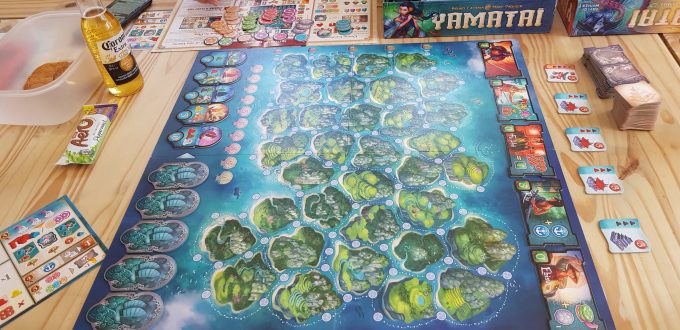Grown-ups want stuff. Gamers want stuff. We love handling components whilst parsing our next turn.
Rightly or wrongly, we can find ourselves assessing value for money in the board games we buy through the quality and quantity of the cardboard kit inside the box.
As a result, bits-for-your-buck can become an unfair, but unavoidable, consumer criteria. Strange really because in other areas of life, worth is often calculated through a simple formula; the smaller the cost-per-use, the greater the value. And indeed the most valuable things have no physical form at all; love, trust, kindness.
But board gamers don’t seem to be exclusively economically or philosophically minded folk. We will happily buy our next title based on their components alone.
In fact some of us even buy more copies of the same games if there have been upgrades, re-skinning, or limited editions promising different or more bits! Which, if you think about it, is a little bit nuts when there are so many other games out there to buy and play (and love!). But we do it and we love it and we show no sign of stopping.
Mo’ meeples, mo’ merit?
So, from where did this passion for pieces come?
Ancient games like Chess and Go have been played an incalculable amount of times and show no signs of slowing down. They remain popular today despite their minimalistic designs. So why do our consumerist standards differ for modern games?
Do we somehow forgive older games or allow them to persist despite falling below the desired piece pick ‘n mix because of the age in which they were created? As if the loinclothed creators did their best with the sticks and stones to hand. Well, they were also building the Pyramids by hand so, you know, give them a break!
Interestingly, and almost exclusively abstract in nature, however, the omnipresent puzzles of old are commonly far more complex and strategic than modern counterparts drowning in meeples and sheeples.
It is almost as if the lack of components and theme require those games to have greater depth in order to ensure their longevity, their place in gaming greatness. Yes, you can upgrade your checkers and your chess sets, but underneath the glass, glitz, and glamour, they are still just simple pieces with limited moves.
Strategy v Stuff?
I am sure most of us gamers will attest to the tactical tussle which games like component heavy war games and deck builders require, and, in most cases, the strategic decision making required to succeed in them is a mind-melting experience. But have games generally become more sophisticated as a result of living in a consumer led society where more is presumed to mean better? Or can that feeling of great-game-satisfaction somehow amp up when there is in fact no pile of pieces for weak rules or disappointing play to hide beneath?
Designers and publishers are under enormous pressure to quench our ranging thirst for things. Kickstarter and Gamefound are plastered with pictures of wooden, plastic, and metal components as a hook to get our attention for the latest must have games. Indeed, in a lot of campaigns, the rules and game play fall down to the bottom of the page, hidden under photographs of shiny cubes, coins, and creatures. In maxing out on meeples, however, there can always be a risk of unnecessary bloat. A game which then tries to do too many things with too many bits and ultimately disappoints everyone. Damned if they do, damned if they don’t.
Greener gaming?
In more environmentally conscious times, however, are we under a moral duty to try and limit the amount of stuff we covet and consume, be it inside our board game boxes or in life generally? Some headway is being made to promote greener gaming through eco-friendly production initiatives. But, with a cynical hat on for a moment, does that come with a (recycled) glass ceiling in terms of actual impact? Afterall, social conscience is noble, but does it and will it pay a publisher’s bills? Perhaps – being seen to be green is a big bonus. But shouldn’t we be going beyond just what looks honourable? Shouldn’t we be taking a step backwards into trying to go forwards in our industry?
What would happen, I wonder, if the ink dried up and the plastic melted away? Would big, colourful eurogames be as engaging or even possible with simple pebbles and paper? I anticipate that, as grown-ups, we would lament the loss of our pretty pieces far more than our children who can literally make games out of thin air.
Well, that was a lot of stuff to cover in one blog entry! Fear not, however (or perhaps I should say my apologies!), for these topics will be revisited very soon!


